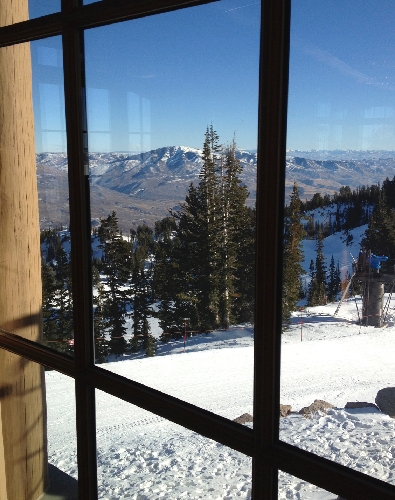Low snowpack signals water crisis at Lake Mead
Mother Nature is a fickle mistress.
One year removed from near-record snow levels that sent 4 trillion gallons of much-needed meltwater into Lake Mead, winter has gotten off to a terrible start in the mountains that feed the Colorado River. Conditions are so dry that water supply forecasters have slashed their projections for Lake Mead by a whopping 2.45 million acre-feet in the past month alone.
That's 24 vertical feet of water gone -- poof! -- from what had been a promising forecast for the valley's primary source of water.
In December, the U.S. Bureau of Reclamation was predicting a roughly 11-foot rise in Lake Mead over the next year. Now the bureau expects the nation's largest man-made reservoir to shed about 13 feet by January 2013.
One acre-foot equals about 326,000 gallons, which is enough water to supply two average valley homes for one year. At current consumption levels, the 2.45 million acre-foot reduction in Lake Mead's forecast since last month represents enough water to supply the entire Las Vegas Valley for a decade.
Randy Julander summed up this year's snowpack in two words: "It stinks."
From his office in Salt Lake City, Julander supervises the federal snow survey program in Nevada, Utah and California for the U.S. Department of Agriculture.
The measurements collected by Julander's team are used to predict floods and forecast the water supplies for farms and cities across the West.
January is a month that "typically puts down a lot of snow," Julander said, but conditions so far across much of the West have been "drier than the Sahara Desert."
"And December was even worse," he said. "The whole upper Colorado River basin is in really terrible shape in terms of snowpack."
Throughout the mountains that feed the river, snow levels stand at less than half of average for mid-January. Several spots have received less than one-third of the snow they usually do by now.
Julander said this winter so far ranks as one of the worst on record, but it's still not quite as bad as 1977, the so-called "year without snow."
"That's the benchmark for the stinkiest year ever," he said.
Based on current conditions, forecasters now expect roughly 5 million acre-feet of water to flow into Lake Powell over the entire season.
Last year, the reservoir on the Utah-Arizona border collected more water than that in June alone.
The amount of water in Lake Powell determines how much water Lake Mead receives in a given year.
After shrinking to a record low level in November 2010, the surface of Lake Mead has risen by more than 50 feet thanks to last winter's bumper crop of snow.
The resulting deluge of snowmelt pushed Lake Powell to its highest level in a decade and returned Lake Mead to where it was in the spring of 2006.
Until that boost, Lake Mead was one dry winter away from an unprecedented federal shortage declaration that would have forced Nevada and Arizona to reduce the amount of water they draw from the river.
Such a shortage declaration also would trigger a final vote by the Southern Nevada Water Authority board over whether to start construction of an expensive and controversial pipeline network to tap groundwater across rural eastern Nevada.
Right now, the valley gets 90 percent of its water from the Colorado River by way of Lake Mead.
Most of the water in the lake began as snowfall in the mountains of Utah, Colorado and Wyoming.
The good news, Julander said, is that it's still relatively early in the season. "We have all of February, March and a good part of April to see this thing turn around."
Perhaps the recovery has already begun.
A series of winter storms is expected to sweep across the region over the next week or so. With any luck, the weather will turn cold and wet and stay that way for a while, Julander said.
"As we say in this business, every day without snow is just another stinking day of sunshine."
Contact reporter Henry Brean at hbrean@reviewjournal.com or 702-383-0350.
Sierra Nevada gets snow
RENO -- A string of storms has brought something Sierra Nevada ski resorts haven't seen much this season: snow.
Lake Tahoe resorts, which have been relying on snow-making machines to stay open, reported the storms have dropped 1 to 2 feet of snow since Thursday. Another storm was expected to dump from 15 to 30 inches overnight at higher elevations around the Tahoe basin by this afternoon, according to the National Weather Service.
"It's great to have Mother Nature lending a hand," said Andy Chapman of the North Lake Tahoe Resort Association.
Despite the new snow, Sierra ski resorts still offered limited operations. The Tahoe basin snowpack was only 25 percent of normal for the date.
Around Tahoe, eight of 170 runs were open at Squaw Valley, five of 100 trails were open at Alpine Meadows and 32 of 97 trails were open at Heavenly. Farther to the south, Mammoth Mountain reported 51 of 150 runs open, while Kirkwood said six of 72 trails were open.


















